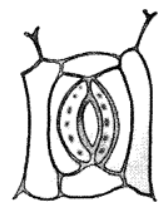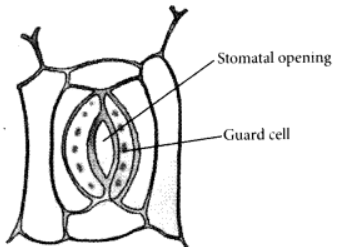
Science - Class 7 (C ...

Topic outline
-
NCERT Solutions for Class 7 Science PDF free download, NCERT Solutions for Class 7 Science Chapter 1 Nutrition in Plants, to Study online or download free in PDF form. NCERT Textbook Answers of class 7 science chapter 1 Nutrition in Plants, CBSE Class 7 Science Notes , Question Answers provided for NCERT Science Textbook for Class 7, Class 7 Science Chapter 1 Nutrition in Plants Exercises Answers, Class 7th Science, Class 7 Science exams, class 7 science notes, science class 7 notes, ncert class 7 science, Nutrition in Plants class 7 notes pdf, NCERT Solutions for Class 7 Science Chapter 1 Nutrition in Plants, Downlaod NCERT Solutions for Class 7 Science, CBSE Science Class 7 Chapter Wise Solved Q&A, Learn 7th grade science, Chapter 1 Nutrition in Plants, NCERT Solutions for Class 7th Science Chapter 1 Nutrition in Plants, CBSE Class 7 Science Chapter 1 - Nutrition in Plants, Chapter 1 Nutrition in Plants class 7 science, Science-Class 7 (CBSE/NCERT)-Chapter 1- Nutrition in Plants - Questions and Answers/Notes/Worksheets – 3 Tags: Class VII - Nutrition in Plants, CBSE Grade 7 Science Nutrition in plants, Science - Class 7- Nutrition in plants, NCERT Solutions for Class 7th: Ch 1 Nutrition in Plants, Class 7 CBSE Science Nutrition in Plants, CBSE class 7 science nutrition in plants, Grade 7 –Science - CBSE / NCERT – Nutrition in Plants Question Bank for seventh class, Question and Answers free worksheet PDF on Nutrition in Plants, Practice page and Important question and Extra question on Nutrition in Plants for seventh standard, Explain the mode of nutrition in fungi. If the pitcher plant is green and carries out photosynthesis, then why does it feed on insects? How farmer is benefited from symbiotic relationship between rhizobium bacteria and legumes? How do plants transport raw materials to the food factories of the plants? From where do the plants obtain nitrogen? Can we say that the insectivorous plants are partial heterotrophs? Explain symbiotic relationship in rhizobium and leguminous plants. Give a brief description of the process of synthesis of food in green plants? Explain symbiotic relationship with the help of example.
-
Nutrition in Plants
Question 53:
What do you call a mutually beneficial relationship between two living organisms?Answer:
Some organisms live together and share both shelter and nutrients. This relationship is called symbiosis. Example: lichens
Question 54:
What are algae?Answer:
We often see slimy, green patches in ponds or in other stagnant water bodies. These are generally formed by the growth of organisms called algae.
Question 55:
Anu is worried about her new shoes which she wore on special occassions that they were spoiled by fungus during rainy season. Is she right to worry, if yes, then tell why does fungi suddenly appears during the rainy season?Answer:
Yes. The fungal spores are generally present in the air. When they land on wet and warm things they germinate and grow.
Question 56:
How fungus can be harmful and useful?Answer:
Many fungi like yeast and mushrooms are useful, but some fungi cause diseases in plants, animals including humans. Some fungi are also used as medicines.
Question 57:
What do you understand by saprotrophic mode of nutrition?Answer:
The mode of nutrition in which organisms take in nutrients in solution form from dead and decaying matter is called saprotrophic mode of nutrition.
Question 58:
A goat eats away all the leaves of a small plant (balsam). However, in a few days, new leaves could be seen sprouting in the plant again. How did the plant survive without leaves?Answer:
Balsam is herb. It has green stems which can carry out photosynthesis.
Hence, even in the absence of leaves balsam plant could survive for a few days.
Question 59:
Potato and ginger are both underground parts that store food. Where is the food prepared in these plants?Answer:
In these plants shoot system are above ground. The leaves prepare food through photosynthesis and transport it to the underground parts for storage.
Question 60:
Why do we boil the leaf in alcohol when we are testing it for starch?Answer:
For the starch test, we need to observe the colour change. Hence to remove the green pigment present in the leaf we boil the leaf in alcohol when we are testing it for starch.
Question 61:
Are mosquitoes, bed bugs, lice, and leeches that suck our blood are also parasites?Answer:
Yes, the animals such as mosquitoes, bed bugs, lice and leeches that suck our blood are also parasites because these organisms derive their nutrition from the host.
Question 62:
Which part of the plant is called food factory of the plant and why?Answer:
Leaves are the food factories of plants. This is because, the synthesis of food in plants occurs in leaves. Therefore, all the raw materials must reach the leaf.
Question 63:
Why do organisms need to take food?Answer:
The food enables living organisms to build their bodies, to grow, to repair damaged parts of their bodies and provide the energy to carry out life processes.
Question 64:
What is special about leaves that they can synthesize food but other parts of the plant?Answer:
The leaves have a green pigment called chlorophyll. It helps leaves to capture the energy of the sunlight. This energy is used to synthesise (prepare) food from carbon dioxide and water.
Question 65:
Why plants such as pitcher plant do not get all the required nutrients from the soil in which they grow?Answer:
Plants such as pitcher plant do not get all the required nutrients from the soil in which they grow because they are deficient in nutrients such as nitrogen.
Question 66:
Name one plant in which photosynthesis occurs in plant part other than leaves. Name the plant part.Answer:
The desert plants have scale or spine-like leaves to reduce loss of water by transpiration. These plants have green stems which carry out photosynthesis.
Question 67:
What is Cuscuta?
Or
Why is Cuscuta plant called a parasite?Answer:
Cuscuta is a parasitic plant. It is yellow tubular structures twining around the stem and branches. It does not have chlorophyll. It takes readymade food from the plant on which it is climbing.
Question 68:
What is the role of rhizobium bacteria in leguminous plant?Answer:
The bacterium called Rhizobium present in leguminous plant can take atmospheric nitrogen and convert it into a soluble form. Thus help in nitrogen fixation.
Question 69:
What is the mode of nutrition in plants?Answer:
The main mode of nutrition in plants is the autotrophic mode of nutrition. Plants have chlorophyll in their leaves which helps them to produce their own food by using water, carbon dioxide and minerals.
Question 70:
Wheat dough if left in the open, after few days, starts to emit a foul smell and becomes unfit for use. Give reason.Answer:
Carbohydrate in wheat dough encourages growth of yeast and other saprophytic fungi. These breakdown glucose and emit a foul smell and spoils dough.
Question 71:
Some plants have deep red, violet or brown leaves. Do these leaves also carry out photosynthesis?Answer:
The leaves other than green also have chlorophyll. The large amount of red, brown and other pigments mask the green colour. Photosynthesis takes place in these leaves also.
Question 72:
How are water and minerals transported in plants?Answer:
Water and minerals are transported to the leaves by the vessels which run like pipes throughout the root, the stem, the branches and the leaves. They form a continuous path or passage for the nutrients to reach the leaf.
Question 73:
What is so special about the leaves that they can synthesis food but other parts of the plant cannot?Answer:
The leaves have a green pigment called chlorophyll. It helps leaves to capture the energy of the sunlight. This energy is used to synthesis (prepare) food from carbon dioxide and water.
Question 74:
Sunlight, chlorophyll, carbon dioxide, water and minerals are raw materials essential for photosynthesis. Do you know where they are available? Fill in the blanks with the appropriate raw materials.
(a) Available in the plant: _______
(b) Available in the soil : ________
(c) Available in the air: _________
(d) Available during day: ________Answer:
(a) Chlorophyll
(b) Water, minerals
(c) Carbon dioxide
(d) Sunlight
Question 75:
How would you test the presence of starch in leaves?Answer:
Iodine solution is used to test leaves for the presence of starch.
Test – Remove chlorophyll by boiling it in alcohol and then add 2 drops of iodine solution. If the color changes to blue, indicates the presence of starch in the leaves.
Question 76:
Observe the diagram and label the following terms [Stomatal opening, Guard cell]
Answer:

-